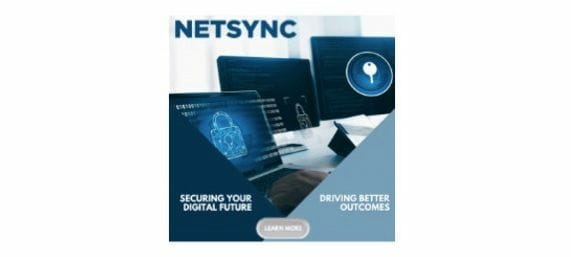

Dall-E Generated Image
Welcome to another edition of the Cybervizer Newsletter.
Our goal is not just to keep you updated with the latest AI, cybersecurity and other crucial tech trends and breakthroughs that may matter to you, but also to feed your curiosity.
Thanks for being part of our fantastic community!
In this edition:
Did You Know
Why The C-Suite Must Champion Incident Response
Generative AI news & Bytes
Cybersecurity News & Bytes
AI Ethics News & Bytes
Power Prompt
Solution Spotlight
Trending Tools & Solutions
Social Media Images
Did You Know
Did you know cyber insurance policies are intricate. Organizations must understand coverage limits, exclusions, and incident response requirements. It’s not just about premiums; it’s about effective risk management.
Did you know AI algorithms now proactively hunt for cyber threats. They analyze patterns, detect anomalies, and predict attacks. It’s like having digital bloodhounds sniffing out malicious code! 🕵️♂️🔍
Did you know As space exploration advances, so do cyber threats. Satellites, space stations, and interplanetary communication networks face vulnerabilities. Imagine a Martian hacker launching a cosmic DDoS attack! 🚀🌌
Original Article: Cybersecurity Imperative: Why The C-Suite Must Champion Incident Response and Near Real-Time Recovery
The Scourge of Ransomware
Ransomware attacks are escalating in complexity and frequency, posing significant threats to organizations of all sizes. In this article, I will attempt to highlight the critical importance of incident response (IR) planning and rapid recovery measures in mitigating evolving cyber threats like ransomware.
For top executives, understanding and implementing a robust IR plan is not just a CIO or CISO concern but a vital business strategy for the entire C-Suite to ensure resilience against ransomware and other cyberattacks. After all, the financial, operational, and reputational stakes are high, and proactive response and recovery measures are among the few paths that can potentially save organizations from catastrophic outcomes.
Personal Insights
Reflecting on my many years in cybersecurity, one particular incident stands out vividly. During my tenure as a Chief Information Security Officer at a previous organization, we were hit by a particularly vicious cyber-attack. The initial panic was palpable, but our reasonably crafted incident response plan and trained team swiftly transformed the chaos into largely coordinated action. This experience, while traumatic, taught me an invaluable lesson: preparation is not just advisable but imperative in the face of evolving cyber threats.
On the Rise
Over the past decade, ransomware has evolved from basic encryption attacks to highly sophisticated operations orchestrated by criminal groups, hacktivists, and nation-states. Its financial impact has reached billions of dollars in just a few years, with projected damages from ransomware expected to soar to $20 billion by 2025.
Cyber threats impact organizations across all industries and sectors and, more often than not, include artificial intelligence-powered threats like ransomware that can severely and rapidly disrupt their operations, damage trust with stakeholders, and lead to substantial financial losses.
Given these alarming trends, top executives like CEOs, CFOs, CIOs, and CISOs must prioritize safeguarding their organizations and data against these malicious threats. So, we will explore the importance of having a detailed IR plan supported by near real-time recovery measures to ensure organizational resilience against ransomware attacks.
The Significance of Incident Response Planning
The Incident Response Plan (IRP) serves as the core strategy for an organization's cybersecurity response and recovery; it outlines the procedures for detecting, responding to, and recovering from cyber incidents with minimal or no disruption to business operations.
For top-level executives, understanding the essence of an IRP is crucial, as its implementation can determine whether a swift recovery or prolonged business turmoil ensues.
Being Proactive: Developing a robust IRP involves proactive measures such as regular risk assessments and IR tabletops and strengthening security by continuously monitoring threat landscapes. Awareness of potential vulnerabilities and attack vectors through accurate threat intelligence or threat hunting enables an organization to fortify its active defenses and potentially reduce risks.
Effective Communication Channels: In a ransomware attack, timely and accurate communication is pivotal. The IRP should establish transparent communication channels among internal stakeholders, such as IT, legal, PR, executive team, and other business entities, with critical capabilities supporting the organization's daily operations and growth. This will facilitate smooth information flow within the organization and with external parties like law enforcement agencies, insurance companies, and 3 party cybersecurity professionals.
Defined Roles and Responsibilities: It is essential to clearly outline the responsibilities of each team member during an incident, from the CEO to the service desk staff. Training and simulations reinforce these roles and ensure a smoother, coordinated response.
Read more of my published original article
Generative AI News & Bytes 🧠
Cybersecurity News & Bytes 🛡️
AI Ethics News & Bytes 🤖
We explain the latest business, finance, and tech news with visuals and data.📊
All in one free newsletter that takes < 5 minutes to read. 🗞
Save time and become more informed today.👇
AI Power Prompt
Explain a cybersecurity or AI Topic like I’m a 9-year-old - This prompt is designed to explain a cybersecurity or AI topic like they would a 9-year old, by simplifying complex concepts and make them understandable.
## Context
As a cybersecurity and AI expert, it's important to simplify complex concepts and make them understandable to people of all ages, including a 9-year-old. This not only fosters interest in the subject but also helps in building a foundational understanding of cybersecurity and AI.
## Approach
The best approach to explaining cybersecurity or AI to a 9-year-old involves using relatable examples, analogies, and non-technical language. Visual aids such as drawings or simple demonstrations can also aid in comprehension.
## Response Format
Use a conversational tone, and break down the topic into small, digestible pieces. Analogies, stories, and real-life examples will help in making the topic relatable and understandable.
## Instructions
1. Keep the language simple and avoid using technical jargon.
2. Use analogies or real-life examples that a 9-year-old can relate to.
3. Encourage questions and provide time for the child to process the information.
4. Use visual aids whenever possible to support understanding.
5. Ensure the child feels comfortable asking questions and seeking clarification.
Note: Any words in [Word] in brackets like that is a variable that you insert or add. Here is the format to add variable after the prompt: [Word] = Your answer for variable
Solution Spotlight

Image Credit: Red Hat, Inc.
Red Hat OpenShift: A Unified Platform for Modern Application Deployment
As technology continues to evolve, organizations face the challenge of efficiently deploying, managing, and scaling applications across diverse infrastructures. Enter Red Hat OpenShift, the industry’s leading hybrid cloud application platform powered by Kubernetes. Let’s dive into what makes OpenShift a game-changer for CIOs, CISOs, and other professionals.
One growing use of Red Hat OpenShift Virtualization is as an alternative to VMware for customers who want to move away from VMware in a Kubernetes environment or are looking for a different licensing model.
What is Red Hat OpenShift? Red Hat OpenShift brings together tested and trusted services to reduce the friction of developing, modernizing, deploying, running, and managing applications. Whether you’re building new applications or modernizing existing ones, OpenShift supports the most demanding workloads, including AI/ML and edge computing. It’s a unified platform that allows you to work smarter and faster, regardless of your choice of infrastructure.
Key Features:
Unified Platform: OpenShift provides a consistent experience across public cloud, on-premise, hybrid cloud, or edge architecture.
Application Development and Delivery: Streamline workflows with built-in Jenkins pipelines and source-to-image technology, allowing you to go straight from application code to container.
Modernization: Bring together development, operations, and security teams under a single platform to modernize existing applications while accelerating new cloud-native app development and delivery.
AI/ML Acceleration: Whether you choose self-managed OpenShift or the AI/ML cloud service, it accelerates AI/ML workflows and the delivery of intelligent applications.
Why Choose Red Hat OpenShift? Organizations worldwide credit Red Hat for transforming their environments. For instance, Agora Publishing Services Ireland improved their digital marketing services, while Kaizen Gaming scaled their application platform a hundred times faster. With OpenShift, you can harness new tools like natural language processing and machine learning to unlock insights from unstructured data, transforming industries like healthcare.
Red Hat OpenShift empowers you to build, modernize, and deploy applications at scale, regardless of your infrastructure. It’s not just a solution; it’s a catalyst for innovation and efficiency. 🚀
Trending Tools & Solutions
Eleven Labs - Convert text to speech online for free with our AI voice generator. Create natural AI voices instantly in any language - perfect for video creators, developers, and businesses. Eleven Labs AI voice generator is powered by an AI model that renders human intonation and inflections with unrivaled fidelity, adjusting the delivery based on context.
Boost CoPilot - Liberate yourself from the daily grind with Boost CoPilot, the AI-powered platform (both ChatGPT 4 Turbo & Claude 3) designed to manage over 275+ tasks effortlessly. Enhance productivity and foster growth while securing a more balanced work-life balance by focusing on what truly matters... your success.
DIGITAL OUTCOMES THAT CONNECT YOU
Netsync focus on relationships and works in close collaboration with you to carefully assess your business priorities then collaborate with you to determine and implement the best solutions and technologies for you.
Questions, Suggestions & Sponsorships? Please email: [email protected]
Other newsletters you might be interested in:
Way to go for sticking with us till the end of the newsletter! Your support means the world to me!
Also, you can follow me on Twitter(X) @mclynd for more cybersecurity and AI.
Thank you!
If you do not wish to receive this newsletter anymore, you can unsubscribe below. Sorry to see you go, we will miss you!












Social Media Images of the Week